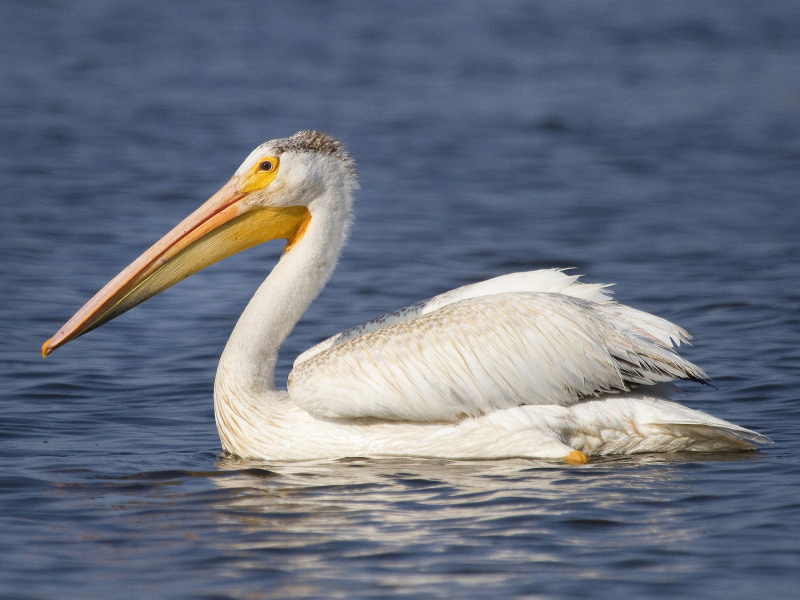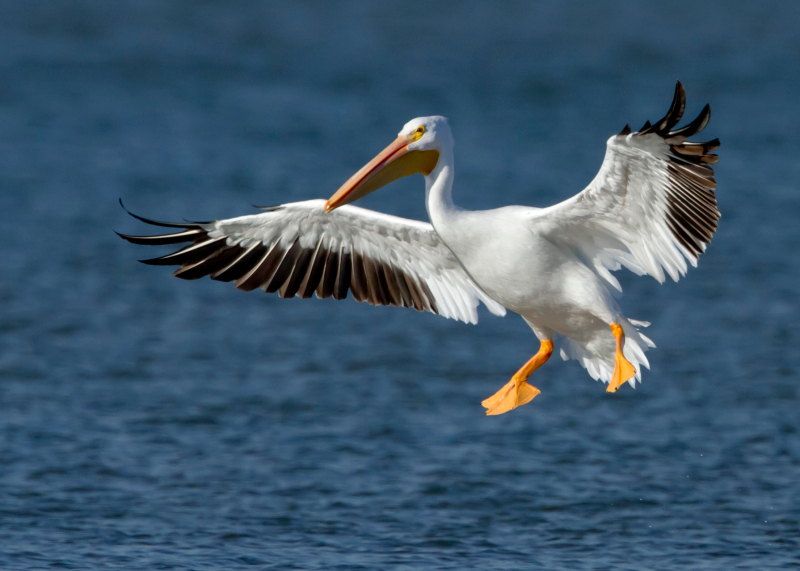American White Pelican

The American White Pelican (Pelecanus erythrorhynchos) is a large aquatic soaring bird from the order Pelecaniformes. It breeds in interior North America, moving south and to the coasts, as far as Central America and South America, in winter. Unlike the brown pelican (P. occidentalis), the American white pelican does not dive for its food. Instead, it catches its prey while swimming. They like to come together in groups of a dozen or more birds to feed, as they can thus cooperate and corral fish to one another. When this is not easily possible – for example in deep water, where fish can escape by diving out of reach – they prefer to forage alone.
Until for the black primary and secondary remiges, which are scarcely noticeable except when flying, the plumage is almost totally dazzling white. The breast feathers are yellowish in color from early spring to mid-late summer, when breeding is ended. The upper head frequently takes on a grey color after molting into the eclipse plumage as blackish feathers develop between the tiny, wispy white crest. During the breeding season, the iris, the exposed flesh surrounding the eyes, the feet, and the enormous, flattened bill are all bright orange in color. On the top bill, about a third of the bill's length behind the tip, there is a laterally flattened "horn" during the breeding season. This is the only one of the eight species of pelican to have a bill "horn". The horn is shed after the birds have mated and laid their eggs. Outside the breeding season, the bare parts become duller in color, with the naked facial skin yellow and the bill, pouch, and feet an orangy-flesh color.











